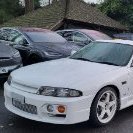How Much Of A Difference Higher Lift Makes ? + Camshaft Duration
Announcements
-
Similar Content
-
Latest Posts
-
Nice one @Pac - looks like a fair few 1600's there!
-
I went to car and coffe near my place last month , few Nissan / Datsun spots for the SAU Crew , and I spotted and R33 at the local shops , it looks like it needs a bit of TLC , but good to see it on the road still.
-
Wouldn't get that in a BMW. 🤣 Sucks that this happened so early in the day but good to hear the suspension feels better. What kind of diff options are available?
-







Recommended Posts
Create an account or sign in to comment
You need to be a member in order to leave a comment
Create an account
Sign up for a new account in our community. It's easy!
Register a new accountSign in
Already have an account? Sign in here.
Sign In Now